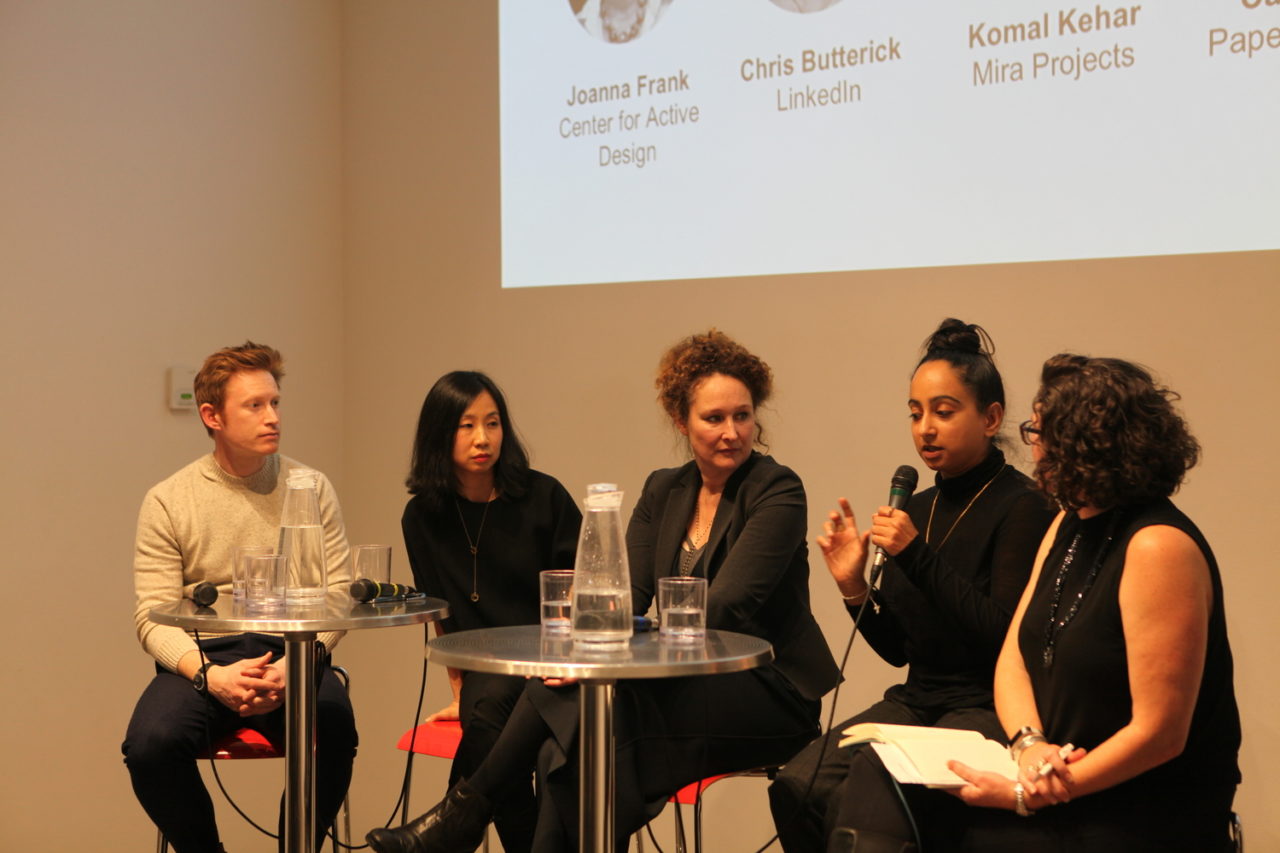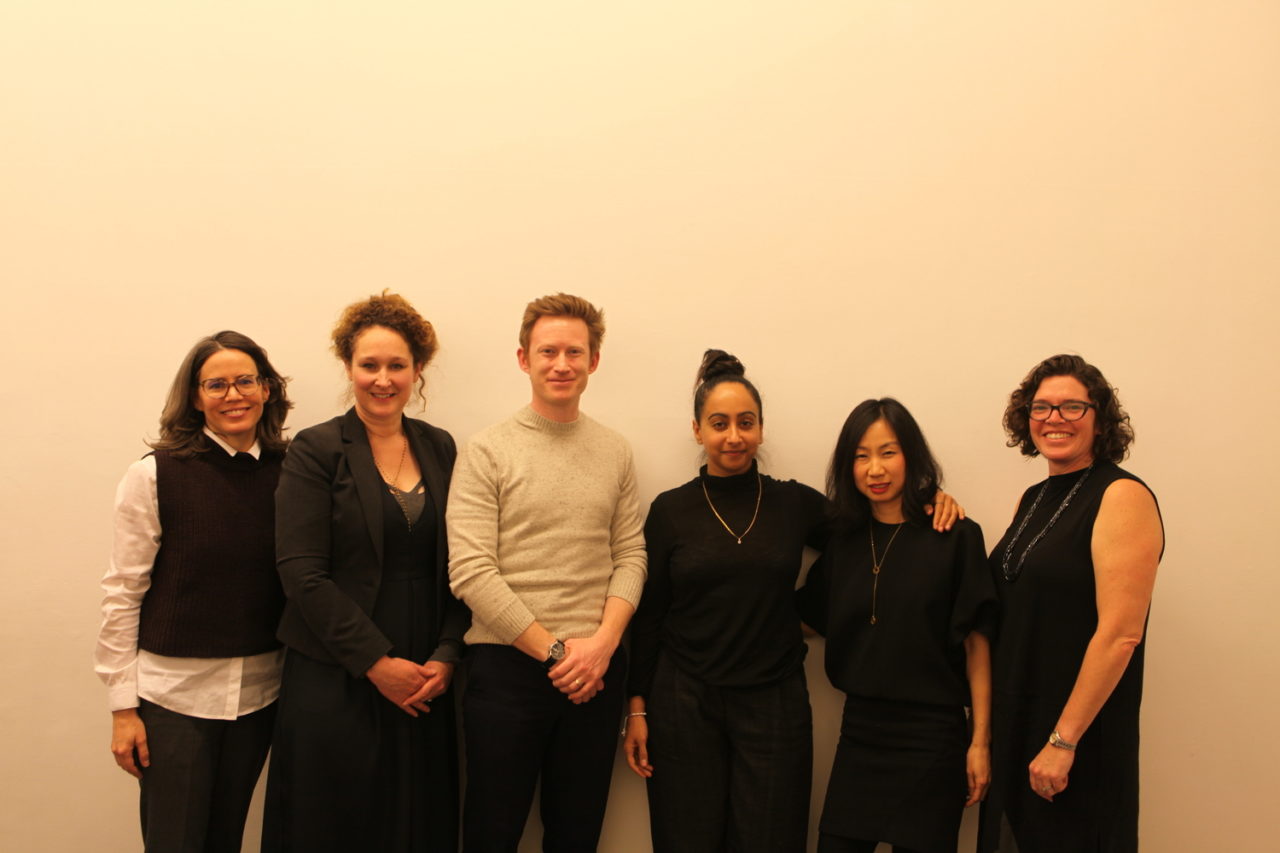by: Carolyn A. Schultz
So much data, so much space, so many variables! What does it all mean for architecture, design and real estate?
Thankfully, the 12.11.17 AIANY Social Science and Architecture Committee event, “In Pursuit of Performance: Financial and Social Metrics of Architectural Success,” helped break down data possibilities into more manageable, meaningful parts. This two-hour program provided perspectives and metrics from a diverse group of speakers.
Key points included:
- Research and data measurements can and should influence the design of spaces.
- Balance qualitative and quantitative data; recognize that numbers are important but don’t tell the whole story
- Different types of data and reports are important to different users, decision makers, and market sectors. Know your goals and audience when organizing and presenting your data.
- To achieve relevant results, ongoing conversations should happen between designers, clients, and end users about the importance of measuring variables that matter for specific purposes, times, and places.
- User experience and data analysis should encompass different senses (such as sight and sound) independently and together.
As an introduction, moderator Melissa Marsh, Founder & Executive Director of PLASTARC and Senior Managing Director of Savills Studley, spoke about “making architecture more flexible through social research” and “establishing metrics of performance between architecture and social science.” She noted that “joy, delight, and occupant satisfaction” are key to integrating architecture with social data and essential to her work. Marsh also reminded us that this event, the committee’s sixth in the 2017 series, is a follow-up from last December’s event “I Love This Place. ” The committee’s 2018 planning is already underway.
Joanna Frank, President and CEO, at the Center for Active Design, focused on city planning and public health. Frank started by citing statistics, including numbers indicating shorter life expectancies, but noted that promoting physical activity and reducing smoking and social isolation can reverse these trends. She noted that safety has emerged as a prominent concern for the mobility of older adults, and described the Delancey Street redesign, a project organized in collaboration with the NYC Department of Transportation where “high visibility crosswalks” proved to increase pedestrian safety by increasing car yield by 30-40%. Additionally, she stated that in NYC, the “reuse of streets into public plazas increases walking, social interaction, and local retail sales up to 172%.” Frank also described increased signage and reduced litter as proven influences on trust in government and police, and spoke about how the Centers for Disease Control (CDC) created the Fitwel building certification to better measure and demonstrate the connections data-driven building and public health. Overall, Frank emphasized that when you build a space, data can help determine why certain details are important and can work; the “right data” can positively influence public health and financial goals.
Chris Butterick, Director of Workplace Operations at LinkedIn, focused on office design and workplace productivity. Butterick talked about his experience leading operations and construction projects, describing the “constant process of trying to align the needs of users with the space that we’re delivering.” Goals included increasing employee recruitment and retention; LinkedIn is already tracking those metrics. Butterick also discussed the renovation of LinkedIn’s offices in the Empire State Building. Through a “co-design experience,” they found “people want the ability to interact with their team, but also privacy” and discovered that “people can quickly adapt their environment for what they need.” Based on research and data, LinkedIn built a mockup that workers could test and before committing to building the final product. As a result, LinkedIn built a “super successful” final space, and “exceeded their targets for recruitment and retention.”
Komal Kehar, Founder of Mira Projects, focused on retail design. Kehar emphasized that “retail design is a creative and commercial discipline.” As she detailed the psychology and “experience economy” key to today’s retail, she described her work designing stores for Aesop, which emphasize multi-sensory experiences that aim to “relate to each customer on an emotional level”, while combining local preferences and company-wide standards based on qualitative and quantitative data that demonstrate financial success.
Caroline Kim, Founder of Paperbox Project, offered a different perspective based on her industrial design and product design background. She noted that projects can include design and/or strategy, and encouraged a focus on both, depending on client goals and budgets. Kim described projects including Rockwell Unscripted for Knoll, a new collection of office furniture for start-up goals and the changing workplace. Knoll provided qualitative and quantitative data that informed the development of designs and technology that worked well for them, including “architectural elements that could be changed and moved around” in simple, inexpensive ways. However, she noted that other clients have not yet prioritized scientific data collection, but have achieved their goals through interdisciplinary understandings from observations about user preferences and actions.
During Q&A with the group, Kim noted that even with little money or time, you can still obtain data by visiting your project site or a similar space for a few hours and observing. Other questions addressed ethnography, surveys, A/B testing, technology and how to synthesize it all. Speakers agreed that whatever metrics you use, it is most important to organize and present your data in a way that your audience will understand, and to keep the conversations and relationships open and ongoing.
Thank you again the AIANY Social Science and Architecture Committee, the speakers, and the audience for their participation and words of wisdom – and stay tuned for more events in 2018!
Carolyn A. Schultz is a marketing consultant and writer, who started her own business in 2015, after 15+ years putting small businesses and nonprofits on the map (including 10+ years winning hundreds of projects in the AEC industry). With Carolyn A. Schultz Marketing & Communications, Schultz provides personalized services from start to finish for articles, proposals, brochures and other winning marketing materials.









